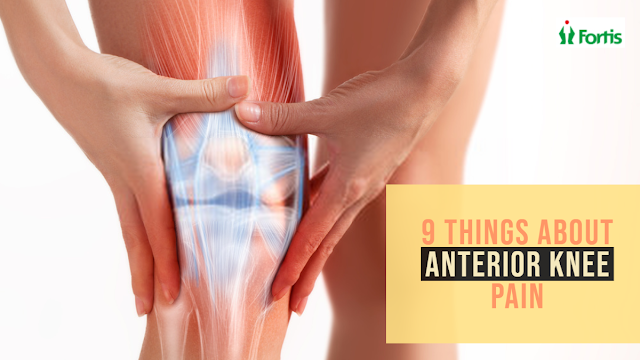9 things about Anterior Knee Pain
Knee pain is a
common term that is heard from people of different ages. The anterior knee pain
occurs on the front and the centre part of the knee. Major structural damage
can be seen on muscles, tendons, ligaments. It is generally observed that patients with anterior knee
pain have patellar tracking towards the outer side of the femur.
Important
facts you need to know about anterior knee pain
The kneecap which
is also called the patella sits over the front of the knee joint. When the knee
happens to be a bend or straighten, the underside of the patella glides over
the bones. Anterior knee pain generally occurs when the kneecap does not move
properly and rubs against the lower part of the thigh bone. As a result,
friction occurs between them and gradually the pain starts. It is caused due to
the following problems:
●
Chondromalacia of the patella: The
softening and the bending of the tissues on either of the knee caps which is
also called Chondromalacia of the patella. It occurs due to physical and
biochemical changes which are manifested as softening and swelling of the
cartilage underneath the patella.
●
The patella turns more to the
outside part of the knee, sometimes called the lateral compression syndrome.
●
Patellofemoral syndrome: It arises
from the patellofemoral joint and underlying soft tissues. It happens due to a
combination of several factors like overuse and overload of the patellar
joints, muscular weakness, imbalance. The pain is located in the knee but the
source of the problem is somewhere else.
Symptoms:
The most common
symptom of the anterior knee pain is severe and aching pain in the knee. The
pain starts gradually. The symptoms are-
●
The anterior knee pain can affect
one knee first and later it can affect both the knees. It is activity-related.
Pain that is generated due to bending of the knees while climbing staircases,
doing exercises.
●
After sitting for a prolonged
time, the anterior knee pain can also occur which is very much aching. Popping
sounds in the knees when you stand up after sitting for a long time or climb up
the staircases.
●
To whom it is more common:
- Young people, sportsperson who remains physically active and
participates more outdoor games and exercises a lot.
- People having obesity.
- People who suffered from dislocation or having fractures.
Signs:
The signs that are
usually seen among patients are-
●
Limping due to discomfort.
●
Inability in stretching the knees
due to redness and swelling of the knees.
Remedies:
Any pain that does
not recover after taking adequate amount of rests should be evaluated by a
physician. The physician can recommend several tests which enable to detect if
there are any abnormalities:
●
X rays: Normal X-rays will give a complete
idea of the dense structures like bones, ligaments etc. But special X-rays will
determine if there is any problem in the shapes, structures and alignment.
●
Magnetic Resonance Imaging (MRI): Magnetic
resonance imaging is done with the help of radio waves, a magnetic field to
produce a complete image of the affected part. The doctor will be able to see
if there are any soft tissues underneath the bones. This will enable to detect
if the underlying tissues of the bones might get injured from physical wear and
tear.
Regular exercises,
a properly maintained balanced diet and the right amount of rests will help you
out of the anterior knee pain.
If you are looking for meeting with Knee Pain Specialist Visit : Best Knee Specialist near you.
Frequently Asked Questions :
{1} Rheumatoid arthritis patients experiences ?



Comments
Post a Comment